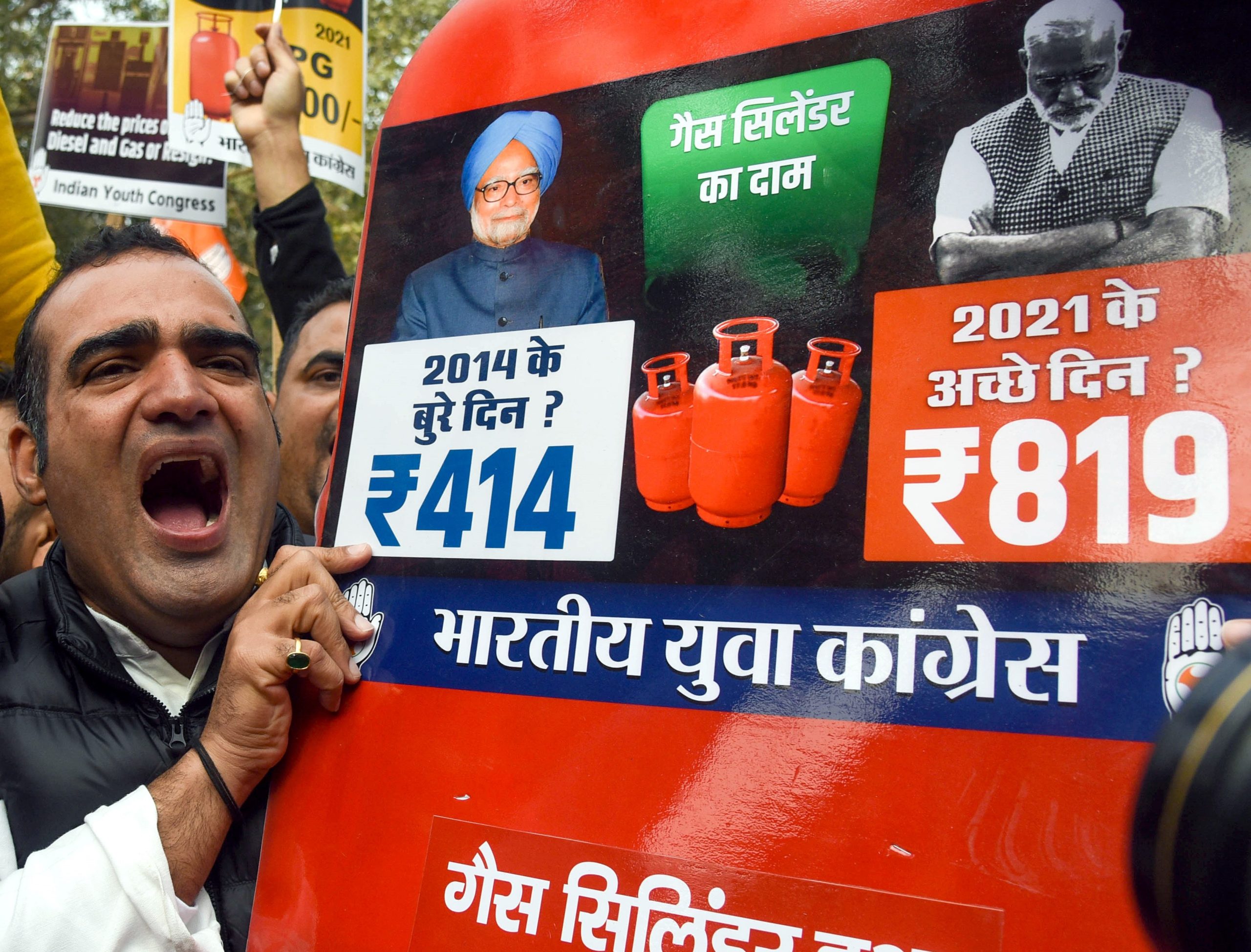Every $10 increase in crude prices impacts the Current Account Deficit (CAD) to the tune of 40 basis points while the same on fuel inflation is 50 bps and also results in 23 bps decline in growth
Our Bureau
Mumbai/New Delhi
The Reserve Bank of India (RBI) has actively intervened to curb rupee’s volatility as various global factors continue to keep the currency under pressure. The central bank could continue to do so if uncertainty on more interest rate hike from the US Federal Reserve goes on or if geopolitics tension between Russia and Ukraine escalates.
This is the assessment of the leading brokerage firm Motilal Oswal Financial Services (MOFSL). The US Federal Reserve raised the key policy rate by 75 basis points to over a decade high at 3.75-4.0 per cent in its latest monetary policy meeting. Notably, this is the fourth consecutive hike of such magnitude. During such monetary policy tightening in advanced economies, big investors tend to move towards those economies for stable and high returns on their investments. Fund outflow, however, is a negative for rupee.
With a view to preventing a steep depreciation in the rupee, the RBI typically intervenes in the market through liquidity management, including through the selling of dollars. “The central bank has accumulated these reserves to be utilized in these kinds of situations,” said Gaurang Somaiya, forex and bullion analyst at MOFSL.
On MOSL’s support and resistance for rupee by 2022, he said the USDINR pair is expected to trade with a positive bias and could hit fresh highs of 85 to 85.50 levels and on the downside, it could be restricted to the levels of 80.20.
Meanwhile, State Bank of India has penciled in lower current account deficit at 3 per cent for this fiscal as against the minimum consensus of 3.5 per cent, citing rising software exports, remittances and a likely $5-billion jump in forex reserves via swap deals. Every $10 increase in crude prices impacts the Current Account Deficit (CAD) to the tune of 40 basis points while the same on fuel inflation is 50 bps and also results in 23 bps decline in growth.
According to Soumyakanti Ghosh, the chief economic advisor at SBI, exchange rate is the major contributor to software exports growth and 40 per cent of its variation is explained by exchange rates. “If we translated these numbers in actual terms, every Re 1 fall against the dollar leads to an increase in software exports by $250 million”.
This, along with an expected $5 billion-forex reserve accrual by way of swap transactions and higher remittances, will cap CAD at 3 per cent of GDP as against the average lowest level projected for the year at 3.5 per cent, Ghosh said.
The strong remittances and software exports have lowered CAD by 60 bps in the June quarter, adding that if this trend continued in the September quarter, then CAD would be below 3.5 per cent in the second quarter and at 3 per cent in the full fiscal. Even otherwise, the chances of it exceeding 3.5 per cent of GDP are minimal, he added.
According to Ghosh, forex reserves, which have declined from $642 billion in September 2021 to just about $531 billion last week, are expected to rise by $5 billion as swap transactions reverse.
The biggest impact on CAD is oil imports, which form as much as 30 per cent of the country’s import bills. Therefore, any increase in oil price has a direct impact on the trade deficit by increasing the import bill and consequently widening the CAD.
Software exports have been rising with the share of offsite mode of exports of software services by domestic IT services companies soaring to 88.8 per cent in FY22 from 82.8 per cent five years ago.
Meanwhile, the rupee depreciated by 30 paise to close at 81.77 (provisional) against the US dollar on Thursday, as participants remained cautious ahead of the release of the US inflation data. Forex traders said a weak trend domestic equities also weighed on investor sentiments. “Rupee came under pressure in the first half of the session ahead of the US inflation number that will be released today. Expectation is that inflation could come in lower and that could keep gains capped for the dollar,” said Gaurang Somaiya, Forex & Bullion Analyst, Motilal Oswal Financial Services.


























